In October 2014 BioAsia opened a Cordyceps Museum called the Cordyceum in Pinghu, a small town 100 km to the Southwest of Shanghai. To celebrate its opening Prof. Li Zengzhi, a cordyceps researcher hired after retiring from his university duties by BioAsia organized an International Cordyceps Symposium March 28, 2015.
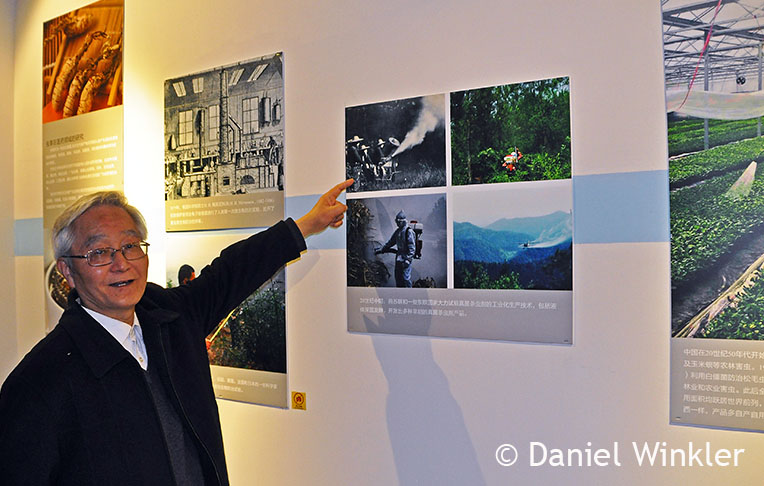
Prof. Li Zengzhi shows how in the 1960s he experimented with spraying Beauveria conidia mixed with soil to fight forest tent caterpillars. Using entomophagous fungi, especially Beauveria and Metharizum for pest control is now standard practice in China, Prof Li stated.
THE CORDYECUM

The Cordyceum has thousand visitors each day! Its free, but the average visitors spends RMB 100 (US$16) in the company store.
Here a short segment from the beginning of the Cordyceps time-line.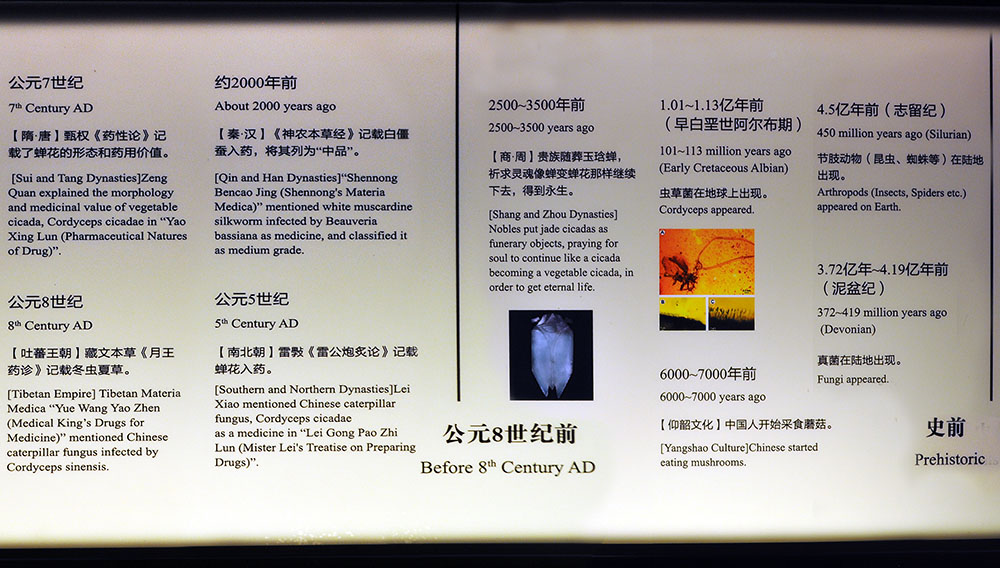 I was not familiar with the details of the medical history of Isaria cicadae in East Asia known in China as "Vegetable Cicadae" or Jin Chan hua 金蝉花, which means literally "Cicada flower". The museum displays a lot of facts about its history. "Cicada flower" use apparently predates the so far known documented use of Yartsa gunbu, Ophiocordyceps sinensis.
I was not familiar with the details of the medical history of Isaria cicadae in East Asia known in China as "Vegetable Cicadae" or Jin Chan hua 金蝉花, which means literally "Cicada flower". The museum displays a lot of facts about its history. "Cicada flower" use apparently predates the so far known documented use of Yartsa gunbu, Ophiocordyceps sinensis.
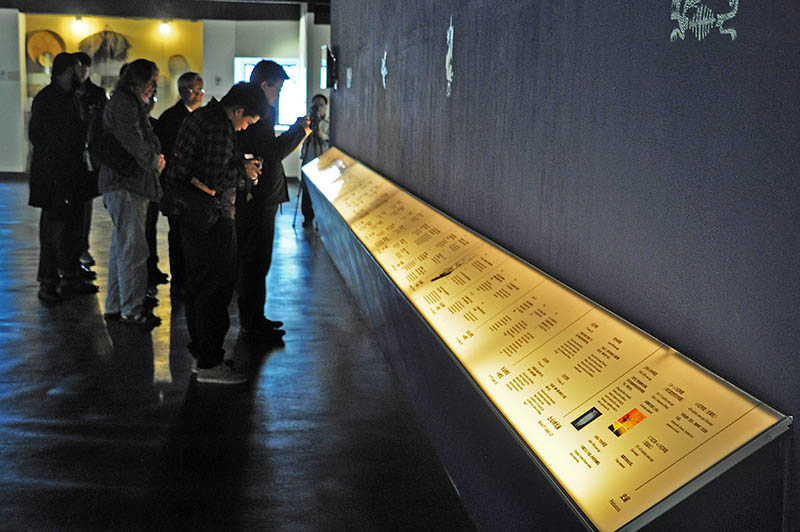
In the museum there is a backlit display showing the historical developement of Cordyceps and its human use and 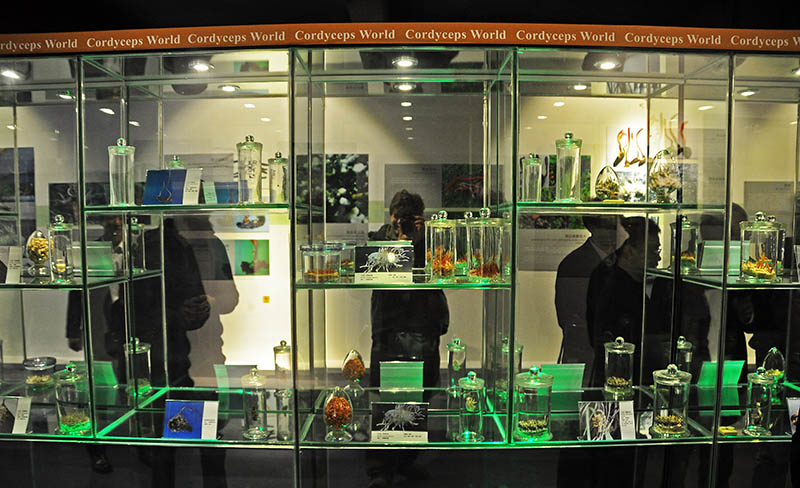
Cordyceum specimen display shelf.
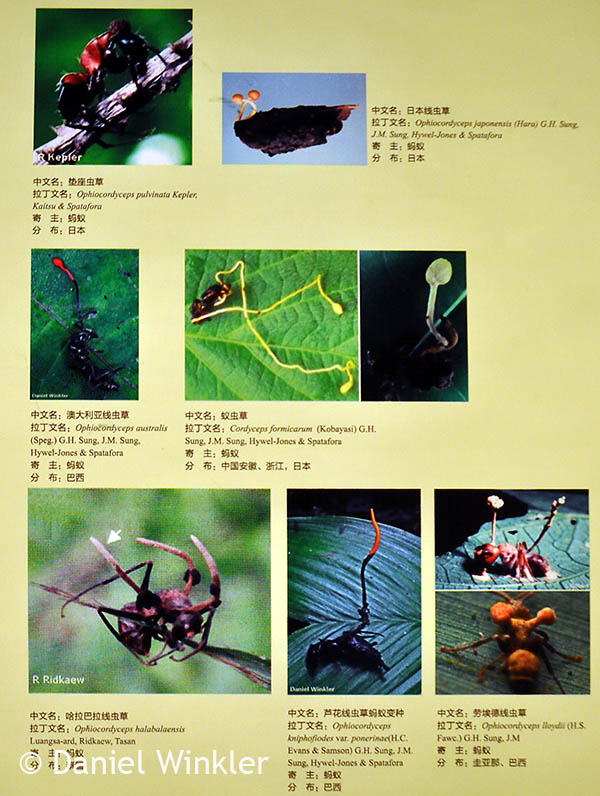
I photographed part of the museum section where they are trying to depict all known Cordyceps & allied species. To my surprise I found a bunch of my own photos! I had never been contacted about the use of my pictures. I was proudly told they were making an effort to keep the photographer's name in the images. Good that I paid more attention in recent years to watermark my best photos with "© Daniel Winkler" before posting them online. I told the organizers, if you had contacted me I would have send you these pictures in high resolution.
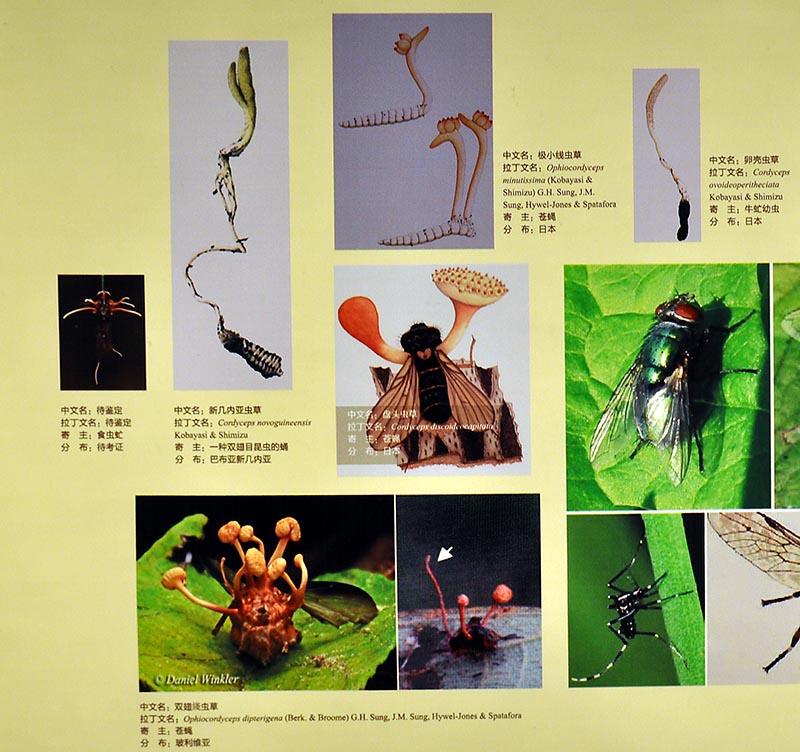
Here another sample of the species photo display section covering fly parasitizing Cordyceps species.
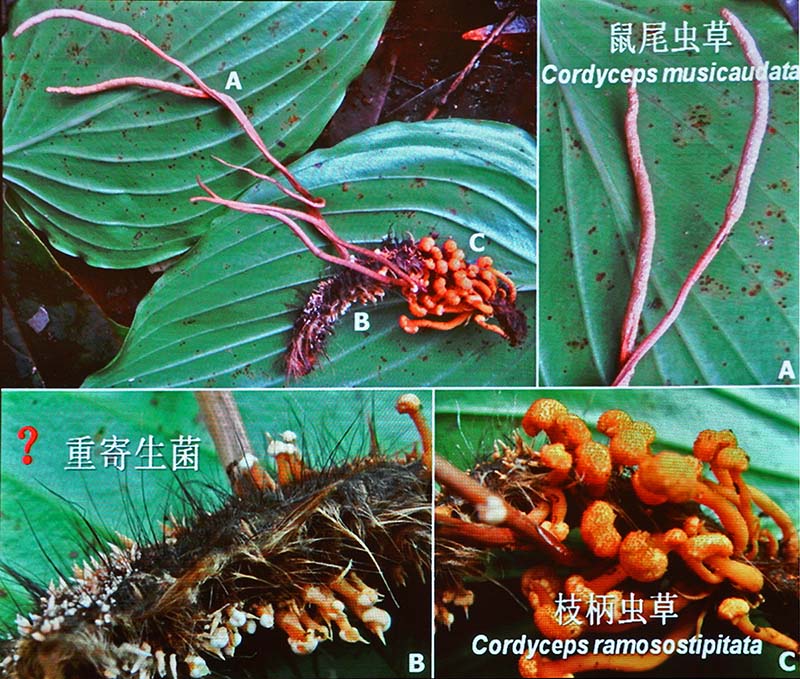
Li Zengzhi's favorite specimen: 3 species of Cordyceps on one caterpillar. The original is shown in the museum.
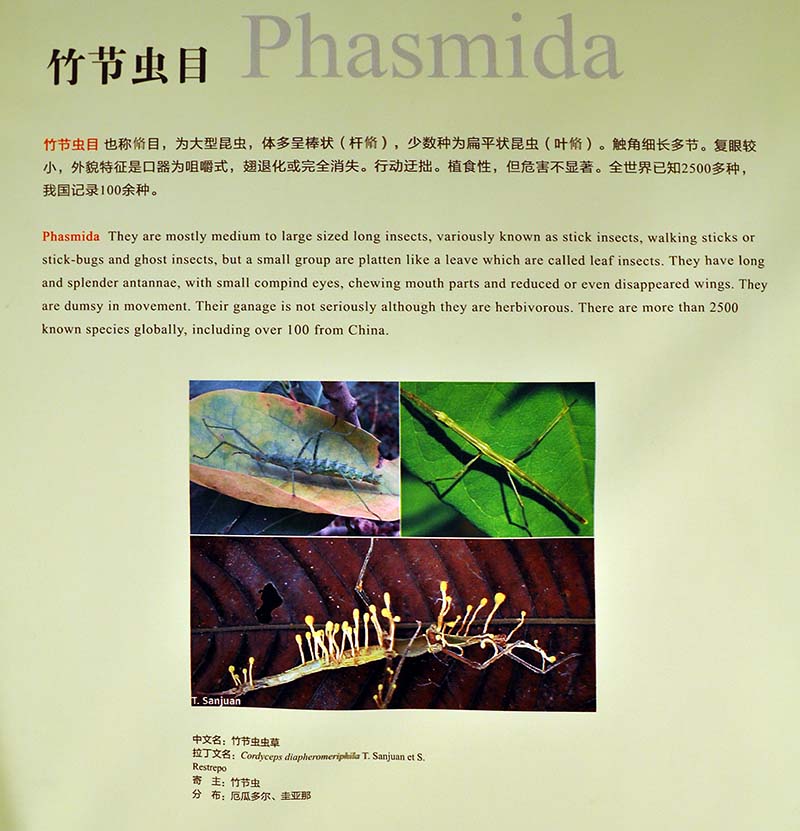
Tatiana Sanjuan's photo of an Cordyceps infected stinkbug.
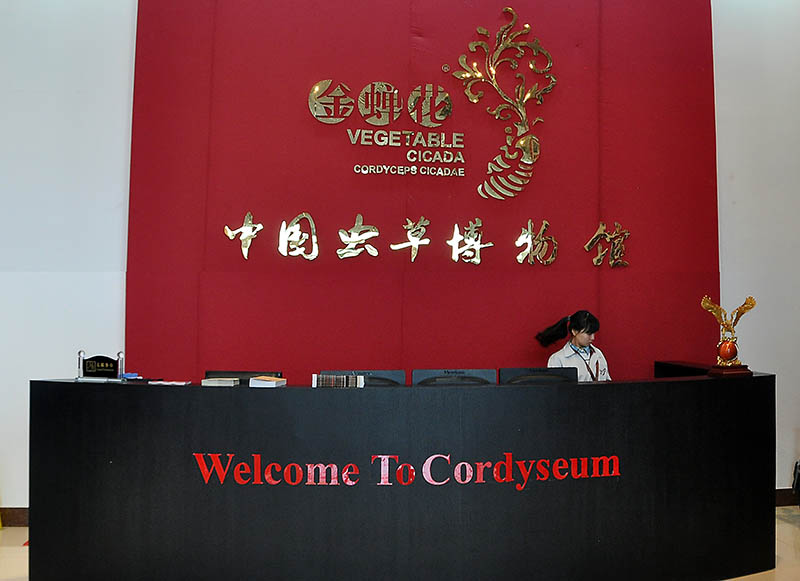
THE INTERNATIONAL CORDYCEPS SYMPOSIUM
The symposium focused on the science of Cordyceps and also product development from cultivated Cordyceps species. Li Zengzhi invited an impressive gathering of Cordyceps researchers there who gave lots of interesting talks. Gi-ho Sung, Korea and Nigel Hywell-Jones, Thailand/UK gave a great overview on Cordyceps taxonomy. It was great hearing them both, and I finally met Gi-ho Sung in person!
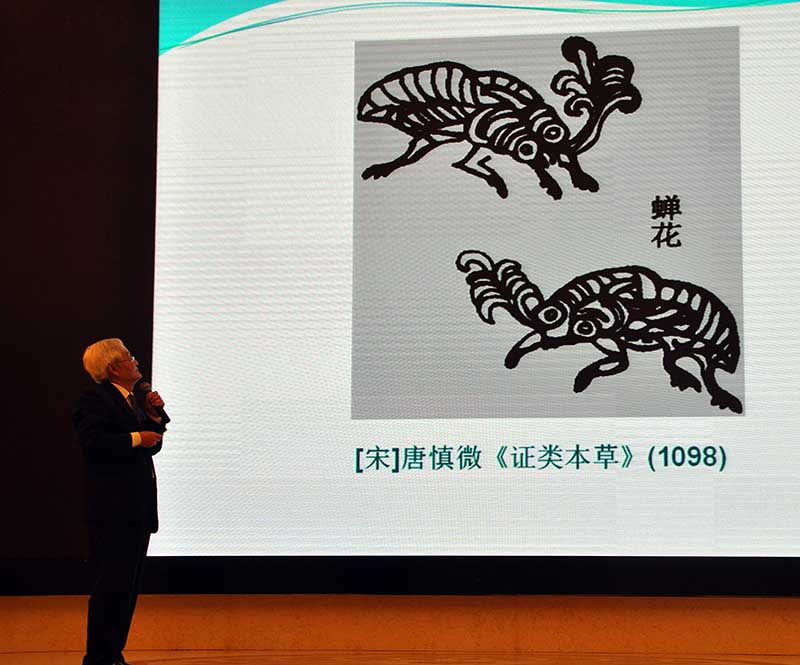
Prof Li Zengzhi talking about the history of Isaria cicadae in China.
Ho-Yong Park talked about Cordyceps as a product in Korea. Wang Chenshu talked about genomical work focusing on commercially used Cordyceps species and I heard for the first time of trials to use yeasts to grow Cordycepin in bio-synthesis. Liu Xingzhong updated on the current research on Ophiocordyceps sinensis in China, fascinating! Apparently more people are succeeding in growing Os fruiting bodies, some from mycelium without insects hosts, some on hepialid larvae. However, no one went into details about this work, it was just mentioned. Unfortunately in the afternoon most talks were in Chinese without translation, like the presentation from Li Yuling, the Qinghai Province Cordyceps office chief. She is also a researcher working in the field on Yartsa gunbu for many years. I had met her before in Xining, Qinghai.
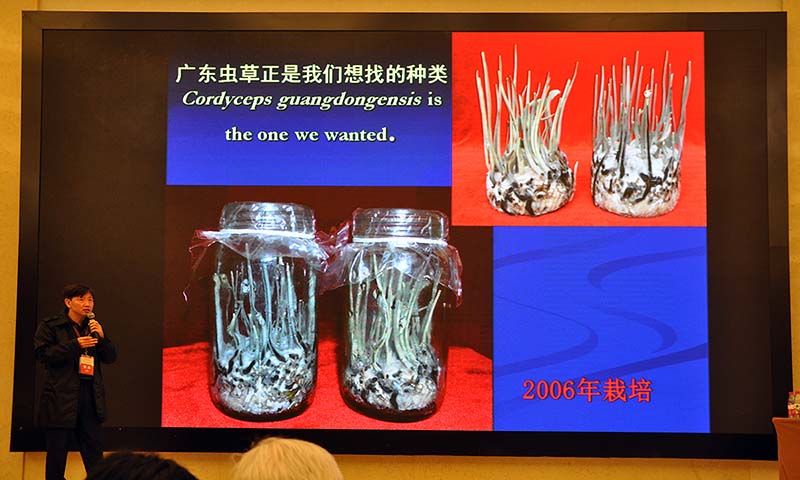
Li Taihui from Guangdong presented how they are working on developing Cordyceps guangdongensis as a new TCM drug.
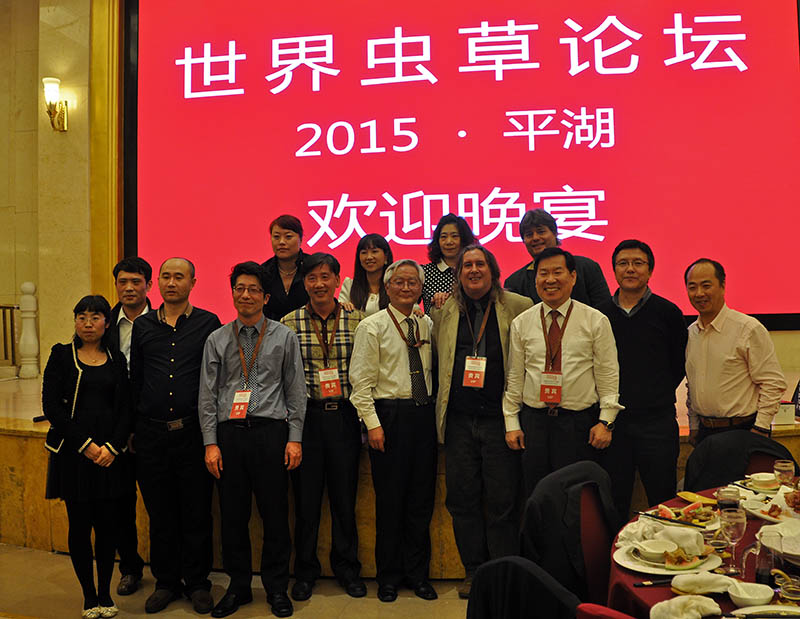
Some presenters at the symposium at the banquet: front row from right to left: Liu Xingzhong, Karma Singay, Ho-Yong Park, Nigel Hywell-Jones, Prof Li Zengzhi, Li Taihui, Gi-ho Sung. I am hiding in the second row.
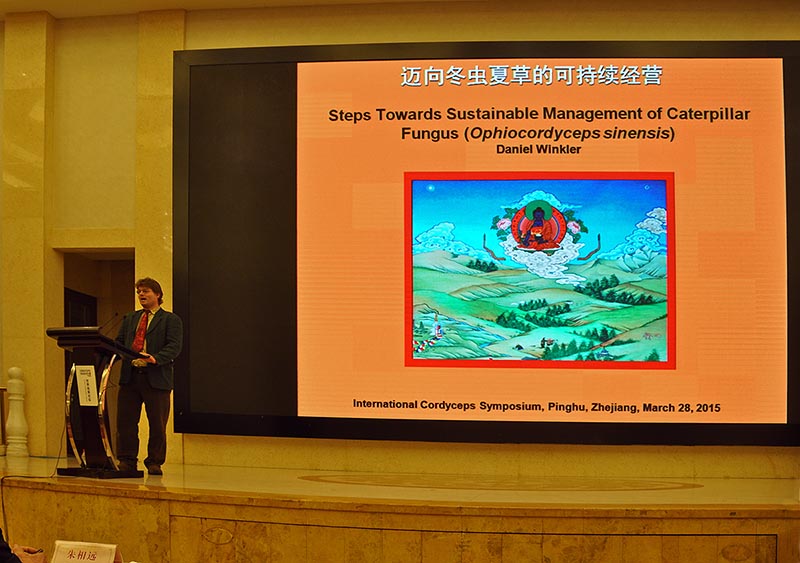
I had the chance to present on collection of Yartsa gunbu, wild Ophiocordyceps sinensis on the Tibetan Plateau and how to harvest it sustainable (Here a link to a paper I published on the issue). Once again I urged the Chinese Cordyceps research community to finally start serious in-situ sustainability studies. Just incredible that such basic research crucial to the survival of the resource, and the Tibetan communities that collect it, is still not under way. Instead, all research focuses on issues that might help to cultivate Ophiocordyceps artificially. I can see the economic incentive and also that artificial cultivation woul;d reduce the pressure on Yartsa gunbu, but I can not understand that a question as fundamental as how to harvest wild Ophiocordyceps sinensis truly sustainable is just ignored and the government is not stepping in and making sure this crucial work is getting underway before the natural resource is seriously damaged by the intense annual collection. Anyway, spreading the sustainable harvest research gospel was my motivation to attend and it made it at least on the BioAsia News webpage. In a post presentation round table discussion this issue was discussed and it was agreed that this is a key issue, but to expect any action to come of it would be too naive.
BioAsia Production in Pinghu - Zhejiang

At the entrance to BioAsia with from left Li Zenegzhi, Daniel Winkler, Giho Sung, Nigel Hywell-Jones, Hoyong Park, Karma Singay, Li Chunru & Tan Youjiu

Isaria cicadae grow room. It takes nearly 4 weeks for the synnemata, the anamorph fruiting body (see below image on product) to fully grow. Isaria cicadae is its current name, but originally it was described by Miquel in 1838 from Brazil, so there is a good chance that the East Asian material might be a different species.
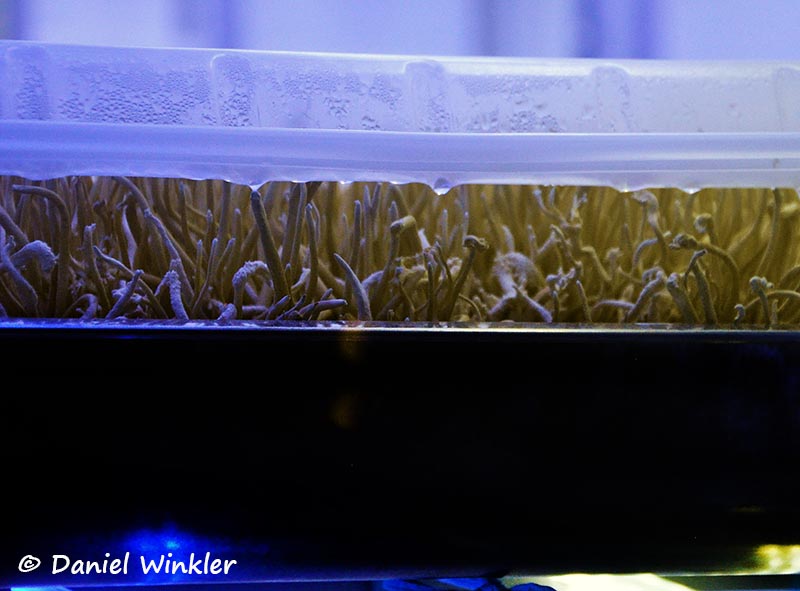
Isaria cicadae synnemata growing in a cultivation tray.
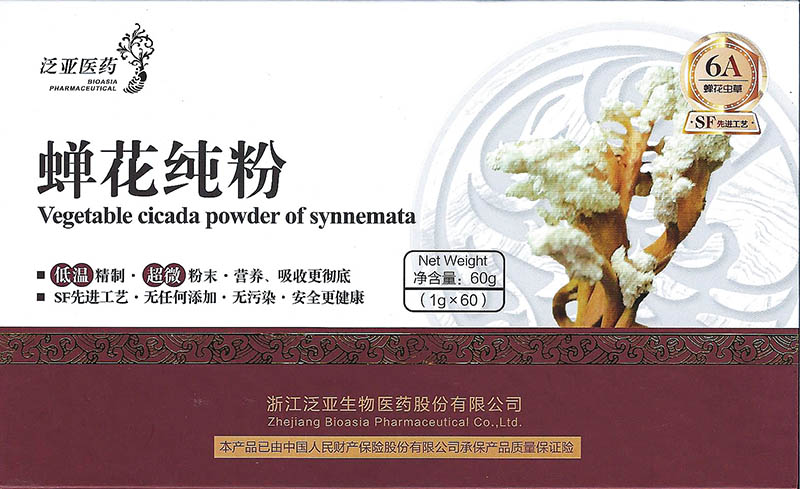 BioAsia's product. The powdered fruiting bodies = synnemata are quite tasty.
BioAsia's product. The powdered fruiting bodies = synnemata are quite tasty.
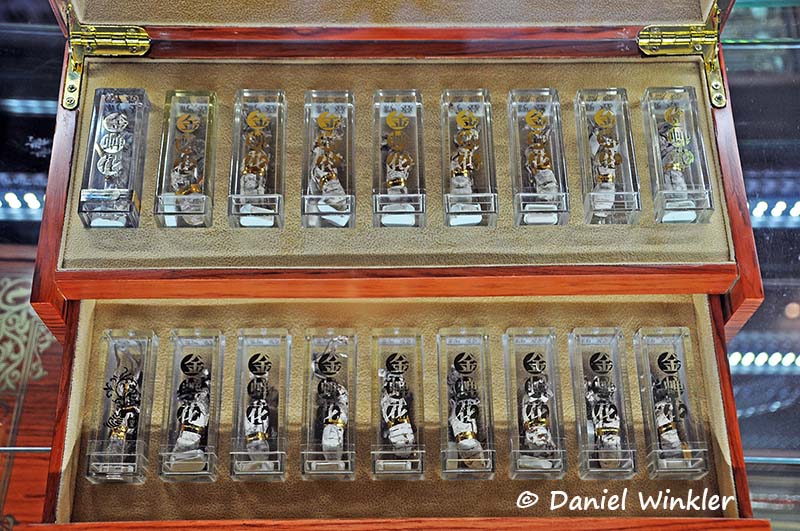
Here the fancy version of Isaria cicadae grown on actual cicadas.
